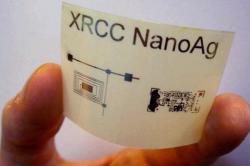Recently a big step towards electronics printing occurred. Xerox has invented a new type of “Silver Ink”, purportedly for 2D inkjet-style printing. However, we suspect this might also be ideal for 3D printers. Imagine an Objet printer (capable of handling two different print materials simultaneously) loaded with plastic and “silver ink”. You could theoretically print objects with embedded (albeit simple) electronics. Well, wiring at least.
Via PhysOrg (Hat tip to Micah)



![Reblog this post [with Zemanta]](http://img.zemanta.com/reblog_e.png?x-id=13a97ccd-6489-4791-9562-33ba509ba536)
There's an old physics experiment where you make a resistor by scribbling with pencil on paper. The thicker the scribble line, the more(?) resistance. So you can make resistors too. And I should think capacitors could be made the same way, if you could manage to print two parallel lines close enough together…